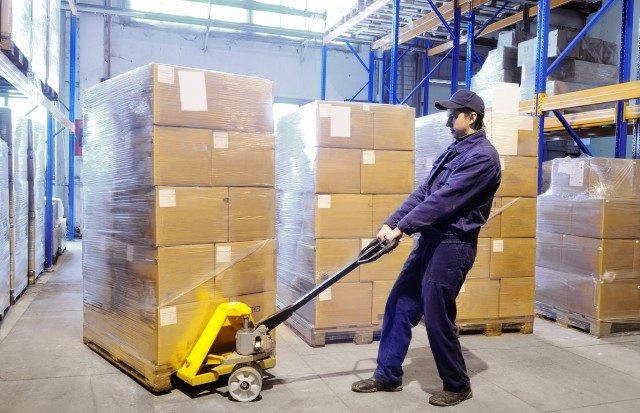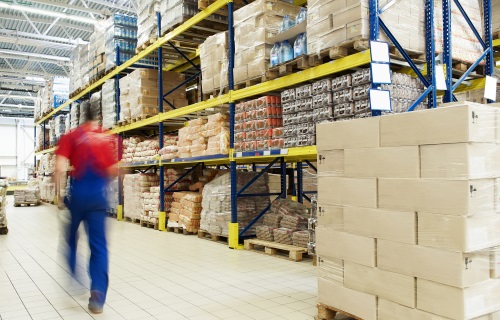Every year, more than 48 million people living in the US are stricken with food borne illness every year, according to the US Centers of Disease Control and Prevention.
In 2011, despite the Food and Drug Administration’s (FDA’s) Food Safety Modernization Act (FSMA) legislation, there were four E. coli outbreaks.
In 2012, there were product recalls in six states due to a Listeria outbreak.
In 2013, the FDA has issued an average of 11 recall notifications per week.
In the rush to reduce the risk of pathogen contamination in the country’s consumable food and pet food manufacturing facilities to meet the FDA’s FSMA legislation, companies have convinced themselves that they are prepared to respond and prevent the risk of contamination.
Preventing pathogen invasions in facilities
However as positively as those improvement efforts are regarded, they often do not account for gaps: just as a glass of water that is half full is, at the same time, half empty.
It would perhaps be wise to consider the advice of Wharton professor and author Adam Grant in his article The Positive Power of Negative Thinking when evaluating how successfully contamination prevention has been implemented in a facility.
In his article, Grant observes that, “many of us are successful when we focus on the reasons that we’re likely to fail.”
Therefore, when evaluating your facility’s efforts to prevent pathogen invasions, consider the following questions:
- Are your plants and facilities built with impermeable walls around their processing rooms and processing areas?
- Will your efforts completely eliminate the risk of common microbial pathogens—such as Listeria monocytogenes, Escherichia coli (E. coli), Campylobacter jejuni, Salmonella and Shigella—contaminating your products?
Although many operations managers would say, “yes, my processing areas will not allow any incoming pathogens,” their facility’s design, types of equipment, pallet selections, and logistic practices would respond “no.”
Is your “castle” secured from contamination?
Every processing room and area must be viewed as a castle, or fortress, with reinforced walls or barriers.
Inside this castle, keep all material handling items such as pallets, forklifts and bins secured inside the fortress walls.
All incoming material handling items such as ingredients transported on supplier-provided skids or pallets should be kept out of the castle.
To ensure that only safe, uncontaminated goods flow out of your fortress, all inbound items should pass through an additional handling step.
Remove items from potentially contaminated external shipping pallets, and transfer them to your facility’s tightly-controlled captive plastic pallets, bins or totes prior to entering the processing rooms or areas.
Because that additional handling step is skidded, many facilities expose their practices, equipment and products to potential contamination.
They allow incoming ingredients, work-in-process and secondary packaging to be delivered directly into the clean room.
No attention is paid to the wood pallets or external pooled pallets, what items may have been transported on them last, or the environment in which they travelled to the facility.
Example 1: Testing process saved facility from product contamination
As an example, an international manufacturer of gravies and sauces has implemented a process to test all incoming ingredient shipments, their secondary packaging and mode of transport.
The testing determines if the incoming product has been exposed to restricted pathogens.
The operations personnel recently discovered that incoming shipments of product, traveling on a nine-block pooled pallet, were shipped on a truck trailer floor damp with liquid from a previous delivery.
The pathogens were discovered after testing the liquid on both the trailer floor and the incoming pallets that came into contact with it.
Had the inbound pallets—now contaminated with pathogens—been permitted into to the plant, the potential for cross contamination to the food products made there would have been extremely high.
Example 2: Truck driver’s shoes found to spread pathogens in facility
In another example, an international restaurant franchise makes its dough in clean plant processing rooms.
However, the pallets used in the processing rooms are also used to ship dough from the processing room onto delivery trucks to be delivered to its outlets.
To maintain product integrity, the pallets are used on their delivery trucks and are subsequently returned to the processing room for reuse.
However, during routine testing of their process for potential contamination, pathogens were discovered on the pallets and on the driver’s shoes.
After investigation, the pathogens on the driver’s shoes were present when he arrived at work and the contaminants spread throughout the processing room, on the captive pallets, and in the delivery truck after a day of delivering finish goods on his route.
Consider defense lines in your facility
Based on these examples, have a “glass is half-empty” perspective on your operations.
What holes in your castle’s defenses are allowing pathogens into your warehouse, storage areas or processing rooms?
How can you turn your human food and pet food plant into a castle to reduce the risk of cross contamination?
Think of your facility as a fortress with a series of defenses.
Your first goal is to separate your processing areas from the rest of the facility.
Do not let inbound items pass freely through your external walls.
Instead, treat your receiving dock like a moat that separates supplied items from the interior spaces until they have been transferred onto a facility-secured captive pallet, bin or tote.
Here are a few suggestions:
- Restrict all material handling equipment (such as forklifts, pallets, bins, totes and more) from entering a processing room or leaving a processing area.
Ingredients or work-in-process entering the processing area must only travel on facility captive pallets, bins or totes.
Transfer loads with pallet inverters, pallet transfer stations, and flow through racks or conveyors to build a wall around your processing area and storage areas.
- Restrict all external pallets, bins and totes from entering the facility using pallet inverters or pallet transfer stations to remove their loads and transfer them onto captive plastic pallets.
If an external pallet is allowed into the facility, it could end up in sensitive areas.
- Use only captive plastic pallets within your facilities.
These additives help to restrict pathogens and to detect any pieces of the pallet that might inadvertently contaminate the final product.
Plastic pallets can be manufactured with anti-microbial additives, radiopaque additives for x-ray detection or metal detection additives incorporated during manufacturing.
- Color-code your plastic pallets, bins and totes for easy visual identification at a distance.
For example, use blue for your processing areas, green for work-in-process storage areas, and black for finished goods storage within your facility.
It also segregates the pallets for use in specific areas.
FDA’s requirements on pallets
The FDA is currently working to clarify the requirements and is holding FSMA hearings related to whether a pallet should be “cleaned” or “sanitized”.
While the current act defines clean as “no debris, soil, blood or oil”, sanitized is defined as a treatment method that “uses heat or chemicals to effectively reduce 99.9% of pathogens.”
In addition to determining whether a pallet needs to be cleaned or sanitized, the FDA is revisiting mandated microbiological testing of a facility and its material handling equipment to verify that a plant’s food safety program works.
Previously considered in November 2011, the requirement was rejected at the time.
However, as of January 2013, this proposed rule is again under consideration.
As FDA commissioner Margaret A. Hamburg said: “We cannot afford to wait until people become ill to realize there is a problem.”
Be more mindful of the weaknesses than strengths when evaluating your food and pet food facilities and operations to safeguard the interests of your customers and business.
Story by Craig S. Scott, MD, International Sales at Polymer Solutions International Inc. The company is a member of the Reusable Packaging Association.














